Getting Started with Native Script PDF

| Title | Getting Started with Native Script |
|---|---|
| Author | Aman Siddique |
| Course | Web Programming - I |
| Institution | Tribhuvan Vishwavidalaya |
| Pages | 168 |
| File Size | 4.4 MB |
| File Type | |
| Total Downloads | 81 |
| Total Views | 162 |
Summary
Download Getting Started with Native Script PDF
Description
Getting Started with NativeScript
Explore the possibility of building truly native, cross-platform mobile applications using your JavaScript skill—NativeScript!
Nathanael J. Anderson
BIRMINGHAM - MUMBAI
Getting Started with NativeScript Copyright © 2016 Packt Publishing
All rights reserved. No part of this book may be reproduced, stored in a retrieval system, or transmitted in any form or by any means, without the prior written permission of the publisher, except in the case of brief quotations embedded in critical articles or reviews. Every effort has been made in the preparation of this book to ensure the accuracy of the information presented. However, the information contained in this book is sold without warranty, either express or implied. Neither the author, nor Packt Publishing, and its dealers and distributors will be held liable for any damages caused or alleged to be caused directly or indirectly by this book. Packt Publishing has endeavored to provide trademark information about all of the companies and products mentioned in this book by the appropriate use of capitals. However, Packt Publishing cannot guarantee the accuracy of this information.
First published: January 2016
Production reference: 1220116
Published by Packt Publishing Ltd. Livery Place 35 Livery Street Birmingham B3 2PB, UK. ISBN 978-1-78588-865-6 www.packtpub.com
Credits Author Nathanael J. Anderson
Project Coordinator Shipra Chawhan
Reviewer
Proofreader
TJ VanToll Commissioning Editor
Safis Editing Indexer
Veena Pagare
Monica Ajmera Mehta
Acquisition Editor
Production Coordinator
Prachi Bisht Content Development Editor Mehvash Fatima
Technical Editor Abhishek R. Kotian
Copy Editor Lauren Harkins
Conidon Miranda Cover Work Conidon Miranda
Foreword Are you tired of writing the same mobile app from scratch for iOS, Android and Windows? Yes? Then, you should be glad you found NativeScript! Owing to the mobile platforms diversification, it is clear that to build a successful mobile application, you should make it available on all of the major mobile marketplaces, namely, Apple AppStore, Google PlayStore, and Microsoft Windows Store. This created a need for companies and developers to publish native apps that are available on all three major mobile stores without compromising on the native user experience. The problem, however, is that these three operating systems are very different and companies need to implement three different applications for these stores. Essentially, your company has to write and maintain multiple implementations for the same problem. Teams write (and have to support) the same apps multiple times. There is a good chance that bugs reported on one platform also exist on the others but remain unnoticed. Apps that are meant to behave identically on all platforms may exhibit subtle differences due to their differing implementations. Also, shipping new features at the same time on all platforms is difficult. This is neither optimal, nor very productive and requires a significant investment to gain the knowledge of three different operating systems, languages, IDEs, APIs, and marketplaces. There has got to be a better way. Enter NativeScript—a framework using the native platform APIs, rendering and layout capabilities to deliver ultimate user experience and will allow developers to reuse their coding skills, eliminating the need to learn new languages and IDEs. The NativeScript framework enables developers to use the pure JavaScript language to build native mobile applications running on all major mobile platforms—Apple iOS, Google Android, and Windows Universal. The application's UI stack is built on the native platform rendering and layout engine using native UI components, and because of that, no compromises with the User Experience of the applications are made. It is also worth mentioning that a full native API access is provided using JavaScript.
This book has everything you need to get started with NativeScript. It starts with the fundamentals, such as the project structure, the command-line interface, how to use basic UI element, how to use third-party native components, and finally, how to target different platforms with NativeScript. The author, Nathanael Anderson, is one of the faces of NativeScript. He has a deep understanding of how the framework operates from inside out and is the best person who can teach you how to use it. "I'm confident that by reading this book, you will be able to quickly get into NativeScript and start building your next cross-platform native mobile application."
Valio Stoychev Product Manager NativeScript at Telerik
About the Author Nathanael J. Anderson has been developing software for over 20 years in a wide range of industries, including areas of games, time management, imaging, service, printing, accounting, land management, security, web, and even (believe it or not) some successful government projects. He is currently a contract developer for master technology and can create a solution for several types of applications (native, web, mobile, and hybrid) running on any operating system. As a senior developer engineer, he can work, tune, and secure everything from your backend servers to the final destination of the data on your desktop or mobile devices. By understanding the entire infrastructure, including the real and virtualized hardware, he can completely eliminate different types of issues in all parts of a framework. Currently, he has multiple highly rated cross-platform plugins for NativeScript, and he works heavily in the NativeScript community by providing things such as bleeding edge build servers to build knightly code. He has also provided multiple patches and features to the main NativeScript project.
About the Reviewer TJ VanToll is a senior developer advocate for Telerik, a jQuery team member, and the author of jQuery UI in Action. He has over a decade of web development experience—specializing in performance and the mobile Web. He speaks about his research and experiences at conferences around the world and has written for publications such as Smashing Magazine, HTML5 Rocks, and MSDN Magazine. You can follow him on Twitter at @tjvantoll and on GitHub at tjvantoll.
www.PacktPub.com Support files, eBooks, discount offers, and more For support files and downloads related to your book, please visit www.PacktPub.com. Did you know that Packt offers eBook versions of every book published, with PDF and ePub files available? You can upgrade to the eBook version at www.PacktPub.com and as a print book customer, you are entitled to a discount on the eBook copy. Get in touch with us at [email protected] for more details. At www.PacktPub.com, you can also read a collection of free technical articles, sign up for a range of free newsletters and receive exclusive discounts and offers on Packt books and eBooks. TM
https://www2.packtpub.com/books/subscription/packtlib
Do you need instant solutions to your IT questions? PacktLib is Packt's online digital book library. Here, you can search, access, and read Packt's entire library of books.
Why subscribe? • •
Fully searchable across every book published by Packt Copy and paste, print, and bookmark content
•
On demand and accessible via a web browser
Free access for Packt account holders If you have an account with Packt at www.PacktPub.com, you can use this to access PacktLib today and view 9 entirely free books. Simply use your login credentials for immediate access.
Table of Contents Preface Chapter 1: Introduction to NativeScript NativeScript Telerik's NativeScript Other competitors NativeScript uniqueness NativeScript is easy NativeScript and TypeScript What is TypeScript? TypeScript's use in NativeScript Choosing a development language Common modules Installing NativeScript Prerequisites
vii 1 1 2 2 2 3 4 4 4 5 5 6 6
node.js iOS Android
6 6 7
Installation
7
Installation help
8
The NativeScript command line NativeScript commands Creating your first application Creating the application in easy steps Running the app Summary
Chapter 2: The Project Structure
8 8 10 11 12 13
15
Project directory overview The root folder The app folder
15 17 18 [i]
Table of Contents
The lib folder The hooks folder The node_modules folder
18 18 19
The tns-core-modules folder
19
The platforms folder
20
The platforms/android folder The platforms/iOS folder
20 22
The app folder The .gradle folder The App_Resources folder The fonts folder The app folder files
24 24 24 25 25
The package.json file License App.js
25 25 26
App.css Application page
27 27
The main-page.js file The main-page.css file The main-page.xml file The main-view-model.js file
27 28 28 29
Foundational components Application component Frame component Page component Creating a second page Creating additional files and pages
31 31 32 32 33 34
Creating settings.js Navigating to another page Running the application Viewing our screen
34 35 36 36
Summary
37
Chapter 3: Declarative UI, Styling, and Events Declarative UI XML parser Page, StackLayout, label, and more node node node node Second node
39 39 40 41 41 42 42 45 46
Declarative UI and components Visual components
46 47 [ ii ]
Table of Contents
Using the Declarative UI for our settings page Our settings.xml file Binding and event system Event system Binding Styling the UI What is CSS? Why use CSS? How to use CSS Configuring your CSS Rules Existing CSS properties Exploring app.css Trying CSS out and styling our application Styling on your own Summary
47 47 49 50 51 52 52 53 53 54 56 58 60 61 62
Chapter 4: Building a Featured Application
63
Layouts StackLayout WrapLayout AbsoluteLayout DockLayout GridLayout Building our featured application Nonvisual components Dialogs
63 64 64 65 66 66 68 69 72
Alert dialog Confirm dialog Prompt dialog Login dialog Action dialog
73 73 74 74 75
Promises The settings screen Declarative UI
75 76
GridLayouts
76
Building the main screen JavaScript code Declarative UI
79 79 82
Main page Declarative UI Main page body ScrollViews More about bindings Repeaters Main-body footer
83 83 84 84 84 85
[ iii ]
Table of Contents
The main-page.css file Application CSS Fonts Icons Communication with the server Trying out our application The server
87 89 90 91 91 95 95
Setting up your own server
96
Trying crossCommunicator out. Summary
97 98
Chapter 5: Installing Third-Party Components Places to find third-party components The Telerik plugin site npmjs.com The NativeScript unofficial plugin list How to install a third-party plugin component Installing the vibration plugin Installing the webSockets plugin Installing the Telerik SideDrawer plugin Using third-party components Using the vibration plugin Using Websockets Using Telerik's side drawer Easily using the components Useful third-party components Summary
99 99 100 100 100 100 101 101 101 102 102 102 108 110 110 110
Chapter 6: Platform Differences
111
Android and iOS differences The soft keyboard The Page.loaded event Code differences Platform classes Declarative UI Declarative UI properties Declarative UI platform qualifiers Platform- and device-specific files
111 112 112 113 114 115 116 116 117
[ iv ]
Table of Contents
Screen size differences Fonts Our own custom resource folders Compiled application resources on iOS Compiled application resources on Android Device differences Summary
Chapter 7: Testing and Deploying Your App Testing your application Test frameworks Local testing of your code Unit testing on the device Installing the test framework Writing tests Running tests Testing your app on a device or emulator Understanding the call stack Android call stack iOS call stack Debugging your application Publishing your application Publishing to iOS Summary
Index
117 118 118 119 121 123 124
125 126 126 128 131 132 132 133 134 136 136 138 139 140 141 141
143
[v]
Preface Welcome to Getting Started with NativeScript. In this book, we are going to go on an awesome journey of building cross-platform applications in JavaScript. We will cover everything from how NativeScript works, to how to test, debug, and finally deploy your application. Over the course of this book, we are going to explore how to build a full-featured, cross-platform messaging platform. The application will work the same on all NativeScript-supported platforms. With your ability to develop in JavaScript and the insights provided in this book, you will be releasing your own cool applications in no time.
What this book covers Chapter 1, Introduction to NativeScript, will teach you about NativeScript and how to install and build your first NativeScript application. Chapter 2, The Project Structure, provides an overview of what all the different files and folders are used for, and we will build and switch to a second screen for our application here. Chapter 3, Declarative UI, Styling, and Events, works through how to create screens using the Declarative UI, style them and then how to create and respond to events. Chapter 4, Building a Featured Application, helps you to actually sit down and build a full-featured, cross-device messaging application using just the standard NativeScript components. Chapter 5, Installing Third-Party Components, delves into how to install several different types of third-party components to enhance our cool communication application.
[ vii ]
Preface
Chapter 6, Platform Differences, looks at how to deal with the differences between iOS and Android and the differences in the actual physical characteristics of the devices even on the same platform. Chapter 7, Testing and Deploying Your App, looks at how to use several different types of testing frameworks, how to debug your application, and finally, how to actually deploy your application.
What you need for this book NativeScript is an open source project; as such, it uses technologies that can be freely downloaded from the Internet. You need to download and install a recent version of Node from http://nodejs.org. You also need a text editor so that you can edit your source code. If you are developing for Android, you need to download and install Java 7, Gradle 2.3, and the Android SDK. For iOS, you need to install Xcode 6.2 or a later version.
Who this book is for If you are already a JavaScript developer and you want to finally build native cross-platform applications for iOS and Android using your skills, then this book is just for you!
Conventions In this book, you will find a number of styles of text that distinguish between different kinds of information. Here are some examples of these styles, and an explanation of their meaning. Code words in text are shown as follows: "which a require statement would load into your code." A block of code is set as follows: { "name": "tns-template-hello-world", "main": "app.js", "version": "1.5.0", ... more json documentation fields... }
[ viii ]
Preface
When we wish to draw your attention to a particular part of a code block, the relevant lines or items are set in bold: { "nativescript": { "id": "org.nativescript.crossCommunicator", "tns-android": { "version": "1.5.0" },
Any command-line input is written as follows: nativescript run ios --emulator
New terms and important words are shown in bold or italics. Words that you see on the screen, in menus or dialog boxes for example, appear in the text like this: "You can probably guess that the Label will still say Tap the button."
Warnings or important notes appear in a box like this.
Tips and tricks appear like this.
Reader feedback Feedback from our readers is always welcome. Let us know what you think about this book—what you liked or may have disliked. Reader feedback is important for us to develop titles that you really get the most out of. To send us general feedback, simply send an e-mail to [email protected], and mention the book title via the subject of your message. If there is a topic that you have expertise in and you are interested in either writing or contributing to a book, see our author guide on www.packtpub.com/authors.
Customer support Now that you are the proud owner of a Packt book, we have a number of things to help you to get the most from your purchase.
[ ix ]
Preface
Downloading the example code You can download the example code files for all Packt books you have purchased from your account at http://www.packtpub.com. If you purchased this book elsewhere, you can visit http://www.packtpub.com/support and register to have the files e-mailed directly to you.
Errata Although we have taken every care to ensure the accuracy of our content, mistakes do happen. If you find a mistake in one of our books—maybe a mistake in the text or the code—we would be grateful if you would report this to us. By doing so, you can save other readers from frustration and help us improve subsequent versions of this book. If you find any errata, please report them by visiting http://www.packtpub.com/ submit-errata, selecting your book, clicking on the errata submission form link, and entering the details of your errata. Once your errata are verified, your submission will be accepted and the errata will be uploaded on our website, or added to any list of existing errata, under the Errata section of that title. Any existing errata can be viewed by selecting your title from http://www.packtpub.com/support.
Piracy Piracy of copyright material on the Internet is an ongoing problem across all media. At Packt, we take the protection of our copyright and licenses very seriously. If you come across any illegal copies of our works, in any form, on the Internet, please provide us with the location address or website name immediately so that we can pursue a remedy. Please contact us at [email protected] with a link to the suspected pirated material. We appreciate your help in protecting our authors, and our ability to bring you valuable content.
Questions You can contact us at [email protected] if you are having a problem with any aspect of the book, and we will do our best to address it.
[x]
Introduction to NativeScript In this chapter, we are going to introduce you to Telerik's NativeScript, and discuss how NativeScript is totally unique in the cross-platform mobile device market, and how it is radically revolutionary for mobile JavaScript development. We will also walk you through the prerequisites of how to install the NativeScript commandline tool. Once the NativeScript tool is installed, we will walk you through the basic usage of the tool and briefly describe the most common parameters. Finally, we wrap up the chapter by creating and running our first NativeScript application. In this chapter, we will be...
Similar Free PDFs
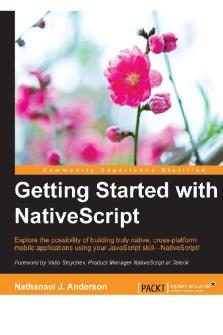
Getting Started with Native Script
- 168 Pages
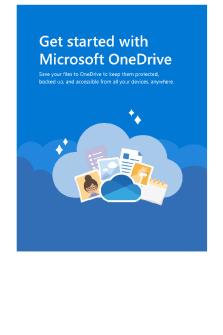
Getting started with One Drive
- 5 Pages
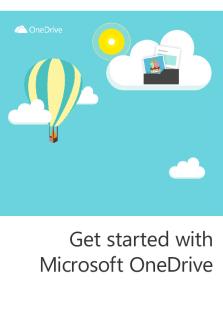
Getting started with One Drive
- 9 Pages
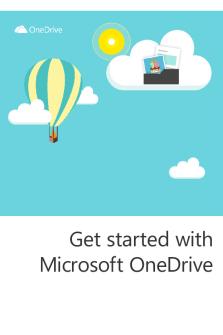
Getting started with One Drive
- 9 Pages
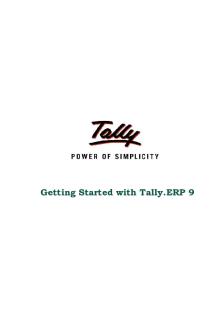
Getting Started with Tally.ERP 9
- 185 Pages
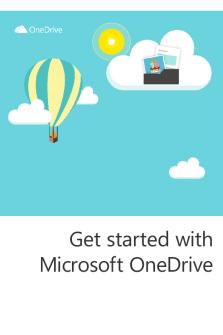
Getting started with One Drive
- 9 Pages

Getting started with One Drive
- 4 Pages
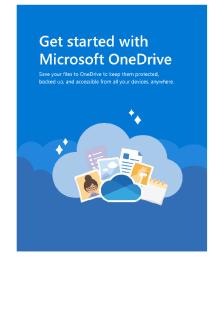
Getting started with One Drive
- 5 Pages

Getting started with One Drive
- 1 Pages

Getting Started with Brand Pro
- 36 Pages

Getting Started
- 6 Pages
Popular Institutions
- Tinajero National High School - Annex
- Politeknik Caltex Riau
- Yokohama City University
- SGT University
- University of Al-Qadisiyah
- Divine Word College of Vigan
- Techniek College Rotterdam
- Universidade de Santiago
- Universiti Teknologi MARA Cawangan Johor Kampus Pasir Gudang
- Poltekkes Kemenkes Yogyakarta
- Baguio City National High School
- Colegio san marcos
- preparatoria uno
- Centro de Bachillerato Tecnológico Industrial y de Servicios No. 107
- Dalian Maritime University
- Quang Trung Secondary School
- Colegio Tecnológico en Informática
- Corporación Regional de Educación Superior
- Grupo CEDVA
- Dar Al Uloom University
- Centro de Estudios Preuniversitarios de la Universidad Nacional de Ingeniería
- 上智大学
- Aakash International School, Nuna Majara
- San Felipe Neri Catholic School
- Kang Chiao International School - New Taipei City
- Misamis Occidental National High School
- Institución Educativa Escuela Normal Juan Ladrilleros
- Kolehiyo ng Pantukan
- Batanes State College
- Instituto Continental
- Sekolah Menengah Kejuruan Kesehatan Kaltara (Tarakan)
- Colegio de La Inmaculada Concepcion - Cebu




